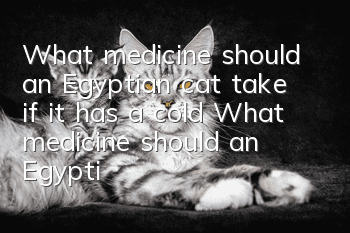How to deal with the diseases that are most common in pets in winter?

Introduction to diseases: dogs
Canine distemper
Canine distemper is a highly contagious infectious disease caused by canine distemper virus. It is highly contagious and has a mortality rate of more than 80%. The main reason for the frequent occurrence in winter is that canine distemper virus can survive for a long time in low temperature environments and can be stored for several years by freeze-drying.
Symptoms of the disease: In the early stage, the dog's body temperature will be as high as 39.5 to 41 degrees Celsius, with loss of appetite, depression, watery secretions from the eyes and nose, sneezing, and diarrhea; in the middle stage, the body temperature will rise again within 2 to 14 days, accompanied by Cough, purulent nasal discharge, purulent eye mucus, secondary gastrointestinal diseases, vomiting, loose stools, bloody stools, loss of appetite, high levels of depression and lethargy; neurological symptoms such as foaming at the mouth and convulsions will appear in the later stages wait.
How to respond: If you suspect that your dog has canine distemper, you can first use a canine distemper test board (you can prepare some at home, it is sold on a certain store) to test the secretions from the eyes, nose and mouth. If the result is positive, it is confirmed to be canine distemper. Distemper needs to be sent to the doctor immediately! If it is negative, it is not necessarily OK. It may be in the incubation period or the amount of virus is not enough. It needs to be observed for a few days before testing.
Canine parvovirus
Canine parvovirus is highly contagious to dogs, and dogs of all ages can be infected. However, puppies that have just been weaned to 90 days old are more susceptible to the disease and the condition is more serious. Mainly because of the cold winter, puppies are not as strong as adult dogs, and their adaptability and body functions are not fully developed, so they have poor adaptability to the environment.
Symptoms of disease: Dogs infected with parvovirus can be clinically divided into enteritis type and myocarditis type
Enteritis type
The incubation period is 4-14 days. The initial symptoms include fever (above 40℃), depression, inability to eat, and vomiting. The initial vomitus is food, which is mucus-like, yellow-green or contains blood. Diarrhea started about a day after the onset of symptoms. The feces will be loose at the beginning of the disease. As the disease progresses, the feces will become brown or tomato paste-colored and bloody. Later, the frequency increased, tenesmus became severe, and bloody stools had a special fishy odor.
Myocarditis type
It is more common in dogs about 40 days old, and the premonitory symptoms of sick dogs are not obvious. Some dogs suddenly have difficulty breathing, suffer from heart failure, and die within a short period of time; some dogs may die after experiencing mild diarrhea.
How to respond:If your dog refuses to eat, vomits continuously, becomes mentally ill, has blood in his stool, has a low body temperature, etc., please send him to the doctor immediately! And use pet-specific disinfectant at home.Use liquid to disinfect, especially the nests and clothes used by pets.
Canine infectious hepatitis
Canine infectious hepatitis is an acute septicemic infectious disease in canines caused by canine adenovirus type I. It mainly occurs in puppies under 1 year old. It rarely occurs in adult dogs and is mostly latent infection. Even if it does occur, most dogs can survive it.
Symptoms: Canine infectious hepatitis is clinically generally divided into hepatitis type and respiratory type
Hepatitis type
It is the most acute type in newborn dogs and dogs under 1 year old. Body temperature increased to 41°C, abdominal pain, vomiting, diarrhea, and blood in the feces. Most die within 24 hours.
In cases with a longer course of disease, in addition to the above symptoms, depression, watery nasal discharge, conjunctival inflammation, and shyness and tearing may be seen. Bleeding or bleeding spots in the mouth and gums. The more special symptoms are subcutaneous edema of the head, neck, eyelids and abdomen, and mild jaundice of the mucous membranes can be seen.
Mild cases only show symptoms such as loss of appetite, slightly higher body temperature, and runny nose, which usually last for 2 to 3 days.
Respiratory type
Sick dogs have elevated body temperature, accelerated breathing, fast heartbeat, irregular rhythm, cough, and serous or purulent nasal fluid; some sick dogs may also vomit or pass loose stools; some sick dogs may have swollen tonsils accompanied by pharyngitis.
How to deal with it:If you find that your dog is afraid of cold, has elevated body temperature, is unwilling to take the initiative to eat, has no appetite, and vomits bloody gastric juice and excretes jam-like bloody stool, you need to send him to the doctor in time! p>
Canine coronavirus
The disease mostly occurs in the cold winter and spreads rapidly, often breaking out in litters within a few days. Although the disease has no distinction between breed, age, and gender, when it is prevalent among dogs, puppies are usually the first to develop the disease, and then spread to other dogs. Dogs of Other Ages. Puppies have higher morbidity and mortality rates than adult dogs.
Symptoms of the disease: In the early stage, there is depression, anorexia, and lethargy. About half a day later, vomiting occurs, ranging from several times to more than ten times a day. Along with vomiting, diarrhea occurs. The vomitus is initially gastric contents and then yellow-green mucus mixed with foam. The stool changes from mushy or semi-mushy to watery, and its color gradually changes from dark green or gray-green to soy sauce color. The stool contains mucus, a large amount of blood, etc., and the stool has a foul smell.
How to deal with it:If you find that your dog has watery diarrhea at the beginning, and it worsens to include blood in the feces or blood in the stool, you need to send him to the doctor in time.
Frostbite
When walking your dog in winter, not only will your teeth chatter due to the cold, but your dog will also get frostbite! (I feel sorry for the dog in the north for a second) Usually when a dog gets cold, the first parts to get frostbite are the ears, tail and Meat pads. If you find that your dog's ears are whiter or grayer than usual, and are cold and hard, be careful as this may be a sign of frostbite in your dog.
Symptoms of the disease: Frostbite can be divided into three degrees according to the degree of frostbite.
First-degree frostbite: red skin, subcutaneous edema, slight pain, which will disappear in a few days after the cause is removed.
Second-degree frostbite: The skin and subcutaneous tissue show diffuse edema, and sometimes blood-like blisters appear. After the blisters burst, they form ulcers that are slow to heal.
Third degree frostbite: 7 to 10 days after frostbite, it is characterized by dry necrosis of tissue of varying degrees and distances caused by local blood circulation disorders. The affected area is cold and lacks sensation, and the skin will undergo necrosis first. Some skin and subcutaneous tissue will undergo necrosis, and even bone necrosis. Wet gangrene often occurs due to venous thrombosis, edema of surrounding tissues, and secondary infection.
How to deal with it: First-degree frostbite can be treated at home by covering it with a warm towel. Second-degree frostbite and above require timely medical treatment!
Introduction to diseases: Cats
Cat plague
Feline distemper is an infectious disease caused by feline panleukopenia virus (FPV), also known as feline infectious enteritis. It is highly contagious and has an acute onset. Kittens under 1 year old are more likely to get it than adult cats, and are more serious. The mortality rate is extremely high.
Symptoms of illness: listlessness, anorexia, intractable vomiting, yellow-green vomitus, sticky secretions in the mouth, eyes, and nose, and sticky feces. When diarrhea occurs, it means that the animal is in the late stage of the disease, and the feces is bloody. Severe dehydration, anemia, and death in severe cases.
How to deal with it: If your cat is depressed (no longer interested in playing with the cat stick), anorexic (no longer eats his favorite canned food), and is accompanied by vomiting, he needs to be sent to the hospital in time!
Cat nasal branch
Cat nasal bronchitis is a viral rhinotracheitis disease in cats (also known as infectious rhinotracheitis). It is an acute infectious disease that occurs in the upper respiratory tract of cats and is very infectious. Kittens will die about half a month after getting sick, and the mortality rate from infection will be higher. The mortality rate for adult cats is about 20%-30%.
Symptoms of illness: The main symptoms of upper respiratory tract infection at the beginning of the disease are depression, anorexia, elevated body temperature, coughing, sneezing, tearing, and secretions from the eyes and nose. The secretions begin to be serous and gradually As the condition worsens, it becomes purulent. Some diseasesCats develop oral ulcers, pneumonia and vaginitis, and some have skin ulcers.
How to deal with it: If your cat’s nasal cavity begins to secrete yellow thick liquid, accompanied by sneezing, and there is serous secretion around the eyes, you need to send him to the doctor in time!
Burns
Cats who are afraid of the cold will not let themselves get cold in the cold winter. They will choose to "stay where it is warm"~ However, the most worrying situation is to accidentally burn themselves... …
And I accidentally permed my beard into big waves...
How to avoid this kind of "scorching tragedy"? If it is a "little sun" type heating equipment, try to turn on the shaking mode instead of the fixed mode to provide even heating; if it is an "electric oil heater" or "radiator" type heating equipment The device can be covered with a pad.
How to respond: If you find that your cat’s burnt area is very serious. Then you should immediately send it to a pet hospital for treatment after first aid treatment (let the water flow continuously to rinse the wound for about 10 minutes). Listen to the veterinarian's instructions, choose the appropriate ointment to apply, and then bandage it to prevent the wound from getting infected.
Introduction to diseases: common diseases of cats and dogs
Respiratory diseases
Because winter is cold, pet owners usually keep doors and windows tightly closed to prevent air circulation, resulting in a higher density of bacteria in the air, making pets more susceptible to respiratory problems. Among them, puppies/cats, elderly dogs/cats, and short-nosed dogs are more susceptible to the disease.
Common symptoms include: coughing, nasal irritation, sneezing, runny nose, nosebleeds, rubbing the face with paws, low fever, difficulty breathing, intolerance to exercise, lethargy, anorexia, etc.
How to respond: Pet owners need to pay more attention to whether their pets are breathing normally. If they have difficulty breathing, keep sneezing, have a runny nose, and are accompanied by coughing, they need to be sent to the doctor for examination in time!
Methods to prevent diseases
Don’t look at the above diseases that are coming fiercely. Severe cases can even lead to death. As long as we take care of them properly, we can keep our pets away from the above diseases!
1. Maintain good indoor ventilation. When the temperature is high during the day, you can open windows to let the indoor air flow;
2. There is a large temperature difference at night, so you must pay attention to keeping pets warm., especially sick pets need to pay more attention to keeping the surrounding environment temperature constant;
3. Strengthen nutrition on a daily basis, properly match the diet, and improve the pet’s own resistance;
4. Reduce the number of baths in winter, and dry your hair in time after washing;
5. Develop good hygiene habits, disinfect the environment regularly when you return from going out, and be careful to use environmental disinfectants specifically designed for pets.
6. Carry out internal and external deworming on time every month, and conduct regular physical examinations every year;
7. Kittens and puppies need three consecutive vaccinations in their first year:
(1) 8 weeks old: first dose of vaccine [(dog: Intervet Quadruple or Zoetis Weijia 5); (cat: Cat Triplet)]
(2) 12 weeks old: second dose of vaccine [(Dog: Interwin Six or Zoetis Weijia 8); (Cat: Cat Sanlian)]
(3) 16 weeks of age: The third dose of vaccine [(Dog: Interwin Six or Zoetis Weijia 8); (Cat: Cat Sanlian)]
In the future, regular immunization will be carried out once a year to strengthen [(Dogs: Interwin Six or Zoetis Weijia 8); (Cats: Cat Triple)] to ensure that the pet’s immunity is maintained at a normal level.
Finally, pet owners should pay more attention to observing their pets. If they find that their pets have symptoms similar to the above, they must seek medical treatment as soon as possible and go to the hospital for examination and confirmation. Do not treat them at home! So as not to delay the best time for treatment.
- Will feeding Ragdoll cats in high-rise buildings cause them to jump? Why jump off the building?
- What are the precautions for cat sterilization surgery?
- What should a pregnant cat eat?
- Reasons why cats drool
- Do I need to get vaccinated if I am scratched by a cat?
- Can I drive a cat on the highway?
- Can confinement improve a cat’s memory?
- Why do parents with erect ears give birth to cats with folded ears?
- Can cats eat chicken livers and hearts nowadays?
- Can Fold-eared cats eat egg shells?



